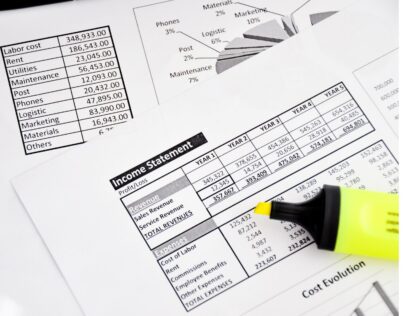GAAP vs IFRS: Untangling the Knots—and Nailing the Tax Provision Calculation
Globalization is great—except… maybe for tax directors, sometimes. That’s because the more jurisdictions your company operates in, the more tax laws and tax treaties you have to stay on top of—it’s an ever-evolving compliance ecosystem. And every bit of it affects the vital day-to-day issues you face: tax strategy, transfer pricing, and the crucial tax provision calculation upon which your effective tax rate (ETR)—and so much else—depends.
There’s an extra wrinkle to the provision process that’s easy to overlook: dueling accounting standards. Companies with subsidiaries around the world must generally follow either U.S. GAAP (Generally Accepted Accounting Principles) or IFRS (International Financial Reporting Standards) when preparing their respective financial statements. While these two standards are similar in many respects, they also have important differences that can really complicate the tax provision process. Those differences, we should note, are also equally material for companies contemplating cross-border transactions.
Navigating this tricky landscape is like playing three-dimensional chess, with all the suspense—and much less of the fun. Our aim here is to simplify and clarify the key areas you need to watch out for, as you navigate both accounting frameworks on the road to calculating your tax provision.
Reporting standards… book accounting… tax accounting… tax provision: How do the pieces of the puzzle fit together?
The tax provision, simply put, is the amount of taxes a company declares it expects to pay or receive in a given period, as reported on its consolidated financial statements. That number reflects the differences between the company’s book and tax accounting, including the anticipated deferred tax liabilities or assets resulting from those differences. It’s also the source of a highly strategic metric—the ETR.
But how do you get that number if you operate all over the world and have to deal with a patchwork of individual rules, rates, regulations, and accounting standards? To illustrate, let’s consider a fairly typical example—a U.S.-based multinational with subsidiaries scattered across Europe. Here’s a simplified view of the process the company would follow:
- Consolidating the financial statements. The company first prepares separate financial statements for each entity, in accordance with the applicable accounting standards (GAAP in U.S., IFRS in Europe) and local laws. Those individual financial statements are then reconciled—eliminating intercompany transactions, and adjusting for differences in accounting policies under the two standards—to create a single set of consolidated financial statements under U.S. GAAP.
- Accounting for tax. The consolidated statements then serve as the basis for the tax accounting stage. The company applies each jurisdiction’s regulations—including deductions, credits, and rates—to calculate its tax liability. This is also the stage where tax directors will focus on optimizing tax positions through planning and ensuring compliance with tax reporting and payment obligations.
- Calculating the tax provision. Now we get to the heart of the matter: accounting for the differences between accounting profit/(loss) and taxable income/(loss). To get there, the company must first identify the book-tax differences between its U.S. GAAP financial statements and taxable income/(loss) based on US tax law and related regulations—and do the same in each European country, following IFRS rules and local tax law. Those differences may give rise to deferred tax assets and liabilities, which are measured (and their eventual reversals timed) based on respective tax rates, regulations, and accounting standards. The total tax provision calculation is basic arithmetic: current tax expense/(benefit) + deferred tax expense/(benefit).
- Final reporting and disclosures. Once completed, the tax provision is integrated into the company’s financial statements, reflected in the income statement, under GAAP, as income tax expense or benefit. (It may also impact other financial statement elements, such as the balance sheet and cash flow statement.) The degree of disclosure detail required is discussed below.
Where U.S. GAAP and IFRS agree
When it comes to income tax reporting and the income tax provision, U.S. GAAP and IFRS do have a lot in common.
Both standards require companies to recognize the current and deferred tax consequences of events that have been recognized in financial statements—and to use the asset and liability method to account for current and deferred taxes. Both also require companies to use the tax rates that are expected to apply in the periods when those deferred tax assets and liabilities are expected to be settled.
Both standards also follow the principles of conservatism and materiality, guiding the recognition of uncertain tax positions. Finally, GAAP and IFRS also require companies to disclose information about significant judgments and estimates they’ve made in determining their tax provision calculation.
Where they differ—and how those differences will affect your tax provision
Despite the basic similarities, the fundamental philosophical differences between GAAP and IFRS— rules-based, vs. principles-based—can and do lead to numerous, significant areas of divergence when the reporting wheels hit the road. These areas will affect how companies calculate their taxable income and tax provision, so grasping them is vitally important to any organization with global operations.
It all comes down to the fundamental principles of recognition and measurement—the how and the when—which underpin all accounting standards. Here’s a summary of some of the most relevant points of divergence, with some real-world examples of how they could affect the provision calculation:
- Deferred taxes. Multiple points of difference in the recognition, measurement, and treatment of items like revenue, expenses, assets, and liabilities lead to disparities between taxable income/(loss) and book income/(loss). These can give rise to temporary differences, which result in the recognition of deferred tax assets and liabilities. Under GAAP, those deferred tax assets and liabilities are recognized using the balance sheet method and recorded based on the tax rates and laws enacted at the reporting date for the period in which the deferred taxes are expected to reverse. Under IFRS, while there are similar recognition criteria, there are differences—e.g., deferred tax assets and liabilities are recorded based on the tax rates and laws enacted, or substantively enacted, at the reporting date. While GAAP requires gross presentation where deferred tax assets are recognized with a valuation allowance further recognized if it is not more likely than not that the deferred tax assets will be realized, IFRS requires net presentation where deferred tax assets are recognized only to the extent it’s probable that they will be realized. Exceptions to recording deferred tax assets and liabilities also differ between GAAP and IFRS. The point being: while under GAAP, certain temporary differences would be recognized for tax purposes, under IFRS, they might not be—or vice-versa.Example: A U.S. company with multiple foreign subsidiaries has decided to adopt IFRS as its unified standard to provide consistency in its financial reporting. It’s carrying a deferred tax liability of $100,000. Under GAAP, that deferred tax liability is recognized in the financial statements, and impacts the tax provision and ETR. However, upon transitioning to the new standard, the company reassesses its deferred tax liability, based on IFRS requirements. Let’s assume that reassessment results in a lower deferred tax liability of $80,000, a temporary difference. This reduction in deferred tax liability would directly impact the tax provision calculation and lower the deferred tax expense recognized under IFRS. As a result, the company’s new ETR would decrease, compared to where it was under GAAP.
- Inventory valuation. The different ways GAAP and IFRS treat inventory valuation can affect the company’s cost of goods sold and gross profit as reported on the income statement—leading to differences in its provision calculation and ETR. Under GAAP, inventory is generally carried at the lower of cost or market value, and write-downs can’t be reversed once recognized. Under IFRS, inventory is carried at the lower of cost or net realizable value, and write-down reversals are allowed if the original reasons no longer exist—impacting the calculation of deferred tax assets and liabilities.Example: Company A has inventory valued at $10,000 on its balance sheet. However, due to a decline in market conditions, the market value of that inventory is down to $8,000. Under GAAP, the company would write down the inventory to its current market value—a $2,000 loss and a lower tax liability. If Company A were to transition to IFRS and the market value subsequently increased to $9,000, that write-down could be reversed, and the inventory would now be valued at $9,000—potentially leading to a higher tax liability.
- GAAP and IFRS have different rules for accounting for intangible assets such as patents and technology—as well as the R&D that goes into them. Under GAAP, some intangibles are recognized and measured at fair value, while others are only recognized if acquired through a business combination, then amortized over their useful lives. Under IFRS, intangible assets are recognized at cost and assessed each year for their useful life, which may be revised. These differences in accounting treatment can impact the timing of write-downs and impairments, which can then influence the tax provision calculation and the company’s effective tax rate.
Under GAAP, R&D expenses are generally expensed as they are incurred, while under IFRS, development costs can be capitalized if certain criteria are met, allowing for their recognition as assets on the balance sheet. The difference in treatment can lead to discrepancies in timing and taxable income, and thus the tax provision. Example: A company acquires a patent with a fair value of $1 million. Under GAAP, the patent is recognized at fair value and amortized over 10 years, resulting in an annual expense of $100,000. Under IFRS, the patent is recognized at cost and also amortized over 10 years, resulting in an annual expense of $80,000. This difference in amortization expense affects the taxable income, potentially resulting in a lower tax provision under GAAP, compared to IFRS.Naturally, these are not the only areas of significant divergence between the two reporting frameworks that touch on the provision process. Important business issues like the way goodwill and fair-value adjustments are treated in business combinations, and the way intracompany foreign currency transactions are handled in financial statements must also be considered. Ditto for the differences in guidance on uncertain tax positions, valuation allowances, and investment tax credits. - Disclosures. Generally speaking, under GAAP, companies must provide more detailed information about income taxes in their financial statements than under IFRS. Rules-based GAAP demands extensive and specific disclosures on all the components of the tax provision, including current and deferred tax expense or benefit, additional information on valuation allowances, tax planning strategies, and uncertain tax positions—whereas principles-based IFRS tends to have fewer prescribed disclosure requirements, providing more flexibility to companies in their reporting. These differences can indirectly impact the tax provision calculation, by influencing how investors and stakeholders interpret and understand the financial statements.Naturally, these are not the only areas of significant divergence between the two reporting frameworks that touch on the provision process. Important business issues like the way goodwill and fair-value adjustments are treated in business combinations, and the way intracompany foreign currency transactions are handled in financial statements must also be considered. Ditto for the differences in guidance on uncertain tax positions, valuation allowances, and investment tax credits.
Reconciling GAAP and IFRS: Top 6 best practices for tax directors
Reconciling GAAP and IFRS in the tax provision process can be a challenging task, to say the least. Here’s a playbook that can help you navigate the rocky shoals, safely and effectively:
- Stay up to date. Do you know what’s changed since your last provision calculation? Tax laws, tax rates, accounting standards and guidance are a nonstop moving target. Don’t fly blind: monitor regulatory changes, and stay on top of the latest accounting standards and guidance. Investing in continuous training can make all the difference.
- Understand the differences. When it comes to thorny areas like recognition and measurement, deferred taxes, business combinations, R&D costs, foreign currency translations, disclosures and more, the devil truly is in the details. Develop a comprehensive, intimate understanding of the key differences between GAAP and IFRS that could impact the tax provision process.
- Conduct impact assessments. Evaluate and quantify the potential impact of specific GAAP and IFRS differences on your tax provision calculation and ETR, especially around issues of timing, treatments, recognition, disclosure, and presentation. Assess how adjustments made to align with one standard may impact key financial metrics, such as earnings per share, debt-to-equity ratio, or interest expense—all of which can indirectly affect your tax provision calculation.
- Document, document, document. Do yourself a solid: Maintain thorough documentation to support every decision you’ve made regarding the treatment (and reconciliation) of specific items under GAAP and IFRS. This documentation will provide a clear audit trail and demonstrate compliance with, and consistent application of, the relevant standards and your accounting policies. Because traceability is key to transparency.
- Continuous collaboration. Keep in close touch with your finance, accounting, and legal teams throughout the year to make sure you’re aligned on how to interpret and apply the ever-evolving GAAP and IFRS rules to the tax provision process and ensure that all relevant data is properly recorded and disclosed. And while you’re at it, feel free to ask your auditor for an opinion on compliance with relevant tax laws.
- Don’t be afraid of technology. Tax software, AI, and other tools can help you streamline and automate the tax provision process. These solutions can help you identify and reconcile differences between GAAP and IFRS efficiently, and ensure accurate calculations.
You’ve got this!
When it comes to the ASC 740 tax provision, the differences between GAAP and IFRS can have a real impact on your effective tax rate and your company’s financial well-being. Remember, mistakes can be costly. Being a savvy tax director means understanding and navigating these divergences—and communicating their impact on the company’s financial statements to key stakeholders, including management, investors, and regulatory bodies.
By staying informed and aligning your tax planning and reporting strategies with the specific requirements of both accounting standards, you’ll not only save yourself future headaches—you’ll be able to unlock the full potential of available tax incentives and credits. So, arm yourself with knowledge, be proactive, and steer your company toward tax provision success. You’ll be a tax hero.







